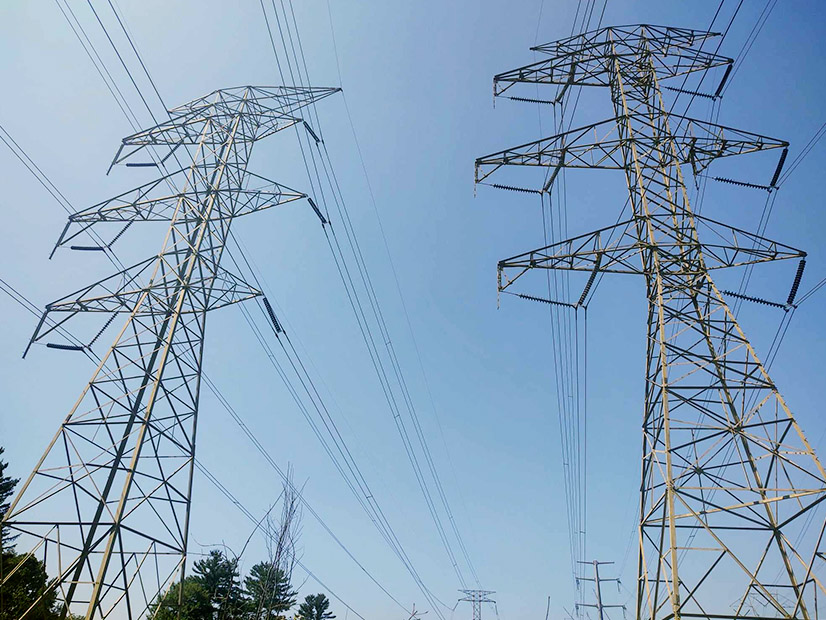Stakeholder groups submitted comments to FERC last week in support of ISO-NE’s proposal to create a new longer-term transmission planning (LTTP) process to facilitate more forward-looking transmission investments to meet looming needs (ER24-1978).
The new process was developed with the New England States Committee on Electricity (NESCOE) and features a default cost allocation method in which costs can be regionalized if the project is expected to bring net benefits.
LTTP requests for proposals would be issued by ISO-NE at the request of NESCOE, and the RTO would evaluate and select a preferred solution. States then could submit an alternative cost allocation method or decide to terminate the process. (See NEPOOL TC Approves Process for States’ Transmission Needs.)
The proposal also includes a supplemental process for projects that do not pass the cost-benefit threshold; individual states could agree to cover the costs in excess, while the remaining costs would be regionalized.
ISO-NE filed the proposal with FERC prior to the commission’s Order 1920, which requires transmission providers to plan at least 20 years into the future, evaluate solutions with a set list of criteria and establish a default cost allocation method to apply if states are unable to reach an agreement on cost. (See FERC Issues Transmission Rule Without ROFR Changes, Christie’s Vote.) The commission issued the order May 13; it goes into effect 60 days after its publication in the Federal Register; and compliance filings are due 10 months after that.
Advanced Energy United, NESCOE, RENEW Northeast, a coalition of climate nonprofits and the Connecticut Municipal Electric Energy Cooperative (CMEEC) all submitted comments in support of ISO-NE’s proposal, applauding the agreement as an important step in proactive transmission planning.
United wrote that the proposal is “urgently needed,” noting that “the first Order No. 1920-compliant planning cycle will not start for at least two years, with selection of transmission facilities slated to occur three years after that.”
However, the clean energy trade association expressed concern the proposal “fails to fully leverage the benefits of transmission competition” by tilting the playing field in favor of incumbent utilities.
“The proposal makes it very difficult for nonincumbents to offer any solutions that require new equipment on a PTO’s [participating transmission owner’s] existing transmission system,” United wrote.
Nonincumbent transmission owners “are prohibited from identifying or installing new equipment needed for upgrades on existing lines without partnering with the incumbent PTO,” the organization added.
These concerns were echoed in comments by RENEW and a joint filing by New Hampshire Transmission and LS Power. The latter two argued the proposal makes the same mistakes as an RFP issued by ISO-NE in 2019 to address reliability concerns associated with the retirement of the Mystic Generating Station. Most of the submissions were disqualified for relying on the land of incumbent transmission owners, which ultimately led to tariff changes intended to fix the issue, the companies said (ER22-733).
“Under the limitations included in the proposal, only an incumbent transmission owner will be permitted to submit comprehensive solutions to identified needs,” the companies wrote, adding that the proposal contains a “a de facto [right of first refusal] for incumbent PTOs.”
RENEW urged FERC to accept the filing as is but called on ISO-NE to initiate an additional phase of revisions to address the concerns about incumbents.
In testimony submitted with its filing, ISO-NE said requiring complete solutions would increase “the likelihood of the process successfully leading to development of transmission solutions, rather than having the process terminate because the submitted longer-term proposals cannot be combined in a manner that addresses the identified needs.”
CMEEC supported the proposal, calling it “a meaningful step towards the more comprehensive planning approach envisioned by the commission.”
“The selection of projects through competitive solicitation should allow for consideration of transmission solution proposals that feature joint ownership arrangements with consumer-owned utilities,” which could provide “myriad benefits” including financial benefits for ratepayers, tax exemptions, lower cost of debt and reduced siting risk, CMEEC wrote.



